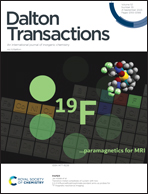Investigation of in situ sulfide/nitride/phosphide treatments of hematite photoanodes for improved solar water oxidation†
Abstract
Surface catalyst engineering can effectively improve the photoelectrochemical water splitting (PEC-WS) performance of semiconductor photoelectrodes. In situ surface functional treatments can effectively reduce interface defects and improve photogenerated carrier transport. In this study, FTO/Sn@α-Fe2O3/FeOOH photoanodes were modified with in situ sulfide/nitride/phosphide treatments to improve their PEC-WS performance. Compared with the pure α-Fe2O3 photoanode, the photocurrent densities of FTO/Sn@α-Fe2O3/FeOOH photoanodes after sulfide/nitride/phosphide treatments increased from 0.88 to 3.38 mA cm−2 at 1.23 VRHE. The onset potential showed a cathode shift of 0.1 V. Photoelectrochemical analyses and theoretical calculation demonstrated that the surface engineering by sulfide/nitride/phosphide treatments can significantly reduce surface defects, enhance electrical conductivity and promote photogenerated carrier separation and transfer efficiency by regulating interface charge transfer, binding energy and internal electric field. The formation of an FeSx catalyst and N/P coordination complexes in the sulfide/nitride/phosphide processes on the surface of α-Fe2O3 photoanodes can effectively reduce photogenerated carrier recombination. This work provides experimental and theoretical support for surface structure design and improved photoelectric conversion performance of semiconductor photoelectrode materials.



 Please wait while we load your content...
Please wait while we load your content...